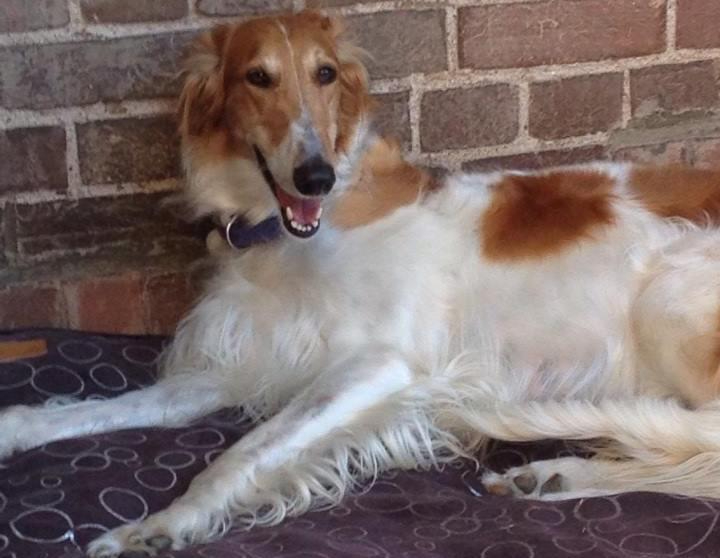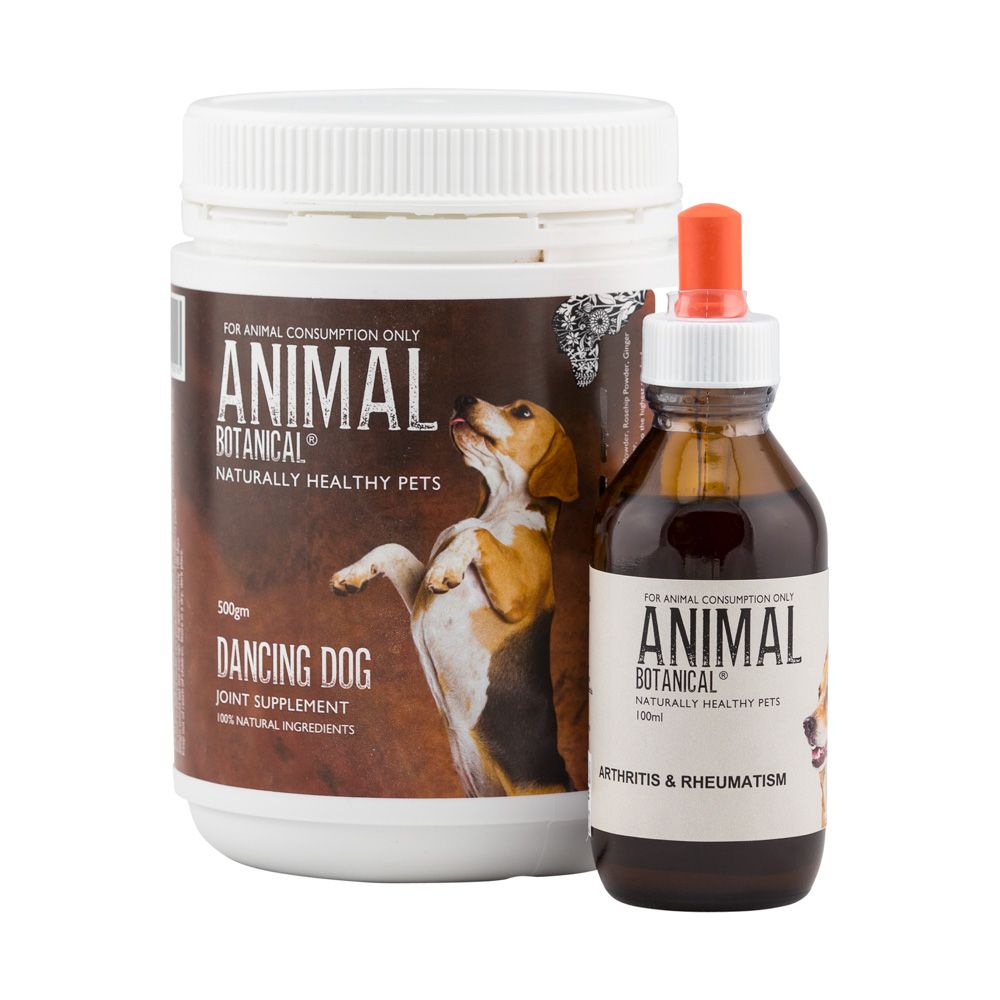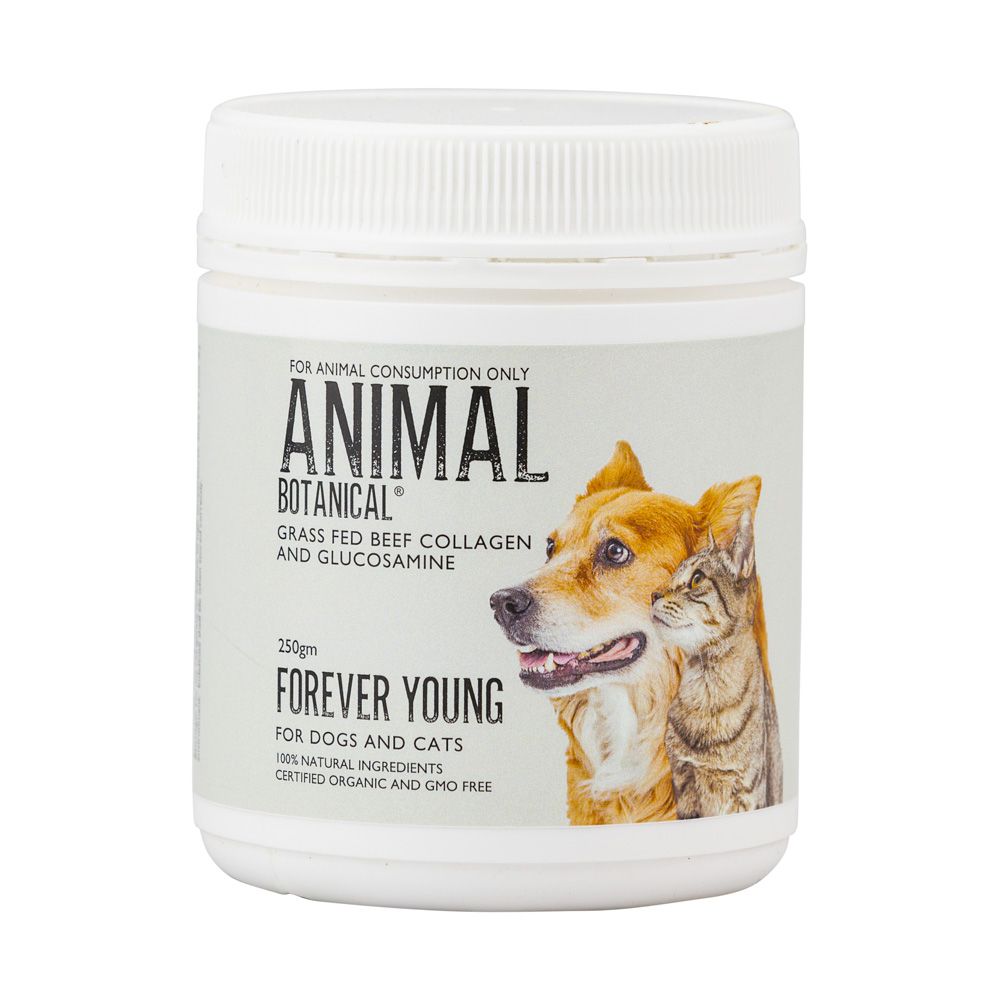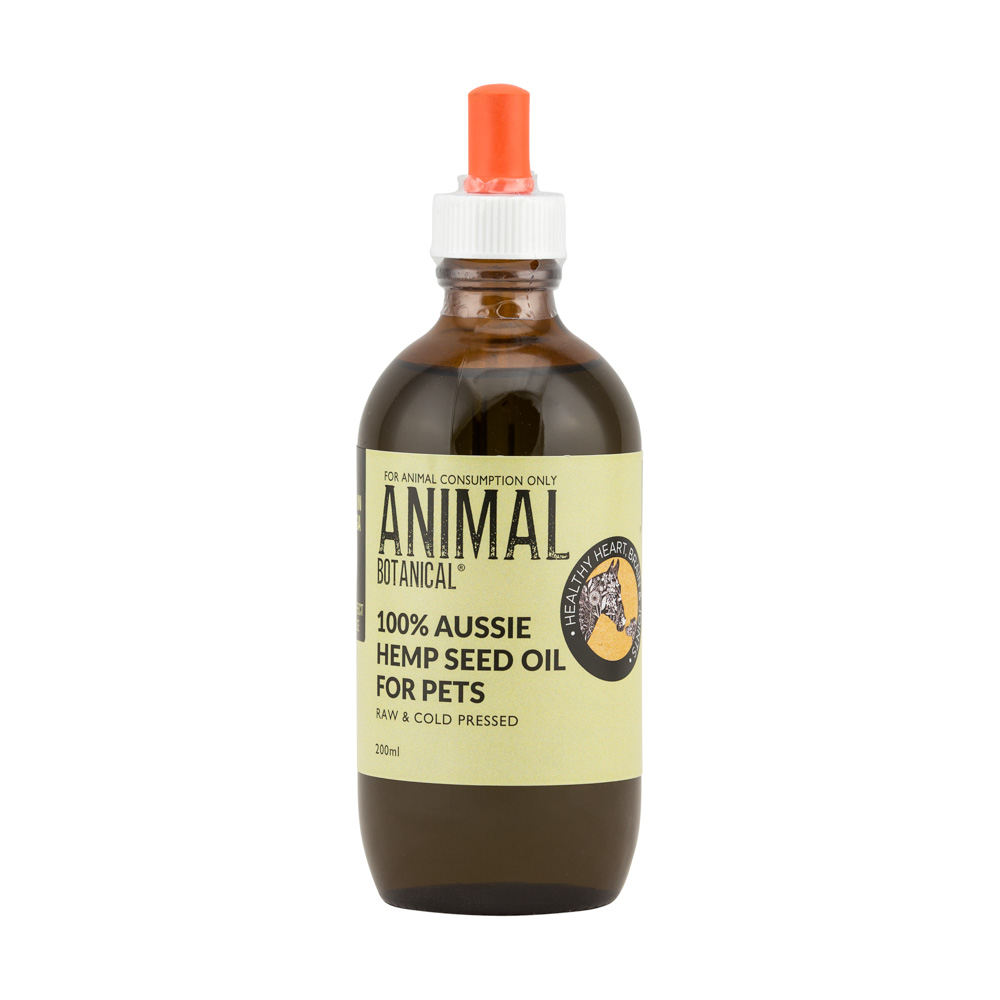Owning a dog is about committing to caring and being responsible for an animal for its whole life, including old age. A lovely quote is "An old dog teaches you lessons about patience, compassion and, ultimately, the great burden of humanity. Death."

The very first thing you must do for your older dog is to take a long hard look at both the dog and at yourself. What I mean to say is, you have to decide whether you are looking at a old dog or a prematurely aged dog. This is where you have to take a hard look at yourself because, if the dog is a young or middle aged dog showing signs of "old age", it may very well be your doing...
Feeding Your Dog
It is never too late to give your dog a bone. Raw bones preferably with some meat on them is the best single food for a dog and there is no reason why a meaty bone cannot form a very large part of the nutrition, minerals, dietary bulk, exercise and recreation for your dog.
Dogs were designed to be able to gulp their food. This was a survival skill in a world where scavenging and pack hunting were the only means of getting fed. In the scavenging business you have to be able to get a belly full as quickly as possible in case some bigger scavenger came along and chased you off your find. In the hunting business when you were younger or smaller you had to be able to get a belly full quickly while the bigger stronger pack members were otherwise distracted. However, sitting under a bush with a big bone salivating and tearing bits of meat off it for hours, sucking out the marrow and chewing up the bone itself are what the doggy good life is all really about. Burying a bone to let it ripen; exercising the neck and forequarters by tearing skin and meat off bones; cleaning teeth and strengthening the neck and jaw by crunching bones is all the best fun and the best nutrition in the world for a dog. There is nothing we have come up with in our modern world of pet food, plastic pretend bones, vitamin and mineral supplements and scientific nutrition and medicine which comes anywhere near it.
Lesson 1
Therefore lesson number one and two is Give Your Dog a Bone. As my colleague Dr Ian Billinghurst says in the titles of his two books "Grow your pups with bones" and: "Give your (adult) dog a bone".
This is the single best thing you can do for your older dog and you must make arrangements somehow, even if you live with your dog in an apartment high above the street in downtown Tokyo or New York, to let your dog have regular raw meaty bones.
Bones provide the best combination of minerals to grow bones (which is not all that surprising really). Bones slow down the ingestion of food so that digestive processes can be properly stimulated and operate at peak efficiency. Bones bulk up the stools so that the dog can produce proper firm and quickly drying (and easier to clean up and less smelly droppings). Bones exercise the teeth, jaw, neck, and forequarters of the dog, which is the whole front half of the dog without even going for a walk.
We are told that bones splinter and can get stuck in the dogs throat and this is true of cooked chicken bones especially but who said anything about cooking the bones. Bones were not cooked, except by accident in the dogs world they were raw and this leads us to lesson number three.
My range of standard herbal treatments includes a standard mixture supporting Bone Repair for those dogs whose feeding history has not been ideal.
Lesson 2
Lesson No 3:
Minimise cooked food and remember that all commercial dog food is a cooked product. It is cooked to kill the natural bugs and the odour; cooked to preserve it; cook to enable the dried or tinned dog feeds to hang together in a suitable form; cooked to enable nutrient and appetite stimulating materials to soak into non nutritious fibers and bulking agents which no self-respecting dog would eat if it was presented on its own. A dogs metabolism was not designed for cooked food and if we condemn them to life on commercial dog feed, we are asking for trouble and inviting an early 'old age'.
There is a place for scraps, after all a dog is a scavenger and can survive and thrive on a very wide range of foods, but let us not abuse this. Let us be selective. In the wild as a hunter or scavenger a dog would go first for the stomach contents of its prey. We are talking partly digested grains and grasses here very much like a mushed up version of our own cooked vegetables and porridge.
I suspect that instinct has given the dogs a special liking for stomach contents for two reasons. Firstly they are a source of carbohydrates and vitamins, which are lacking in meat and secondly they are easily accessible through the softest part of the body and a large meal can be gulped down quickly if you are first in at the kill. They also contain pro and pre biotics which is often what dogs seek out to substitute their own gut bacteria.
Give your dog the vegetable portion of the table scraps. Boil up combinations of whole grain oats, millet and linseed to which you add a little spinach or parsley and give this as the principal cereal meal in preference to any commercial dried or tinned food whatsoever
Lesson No 4:
Fast your dog. Again, in nature, a wild dog would not have been able to feed every day. Domesticated dogs should eat only once per day and then on average of two days per week they shouldn't be fed at all. If you have a yard they will probably manage to find a bone they have put away for a rainy day and if not going hungry for a day does not matter at all, quite the contrary.
Almost all of us feed our dogs too much and too frequently. Do your dog a favour. Don't feed it two days per week at all. On other days either give it either a meat and bone meal or a cereal meal.
Lesson No 5:
Don't give treats. We also often give them treats and there is an emerging industry encouraging us to do just this. Every time we give a dog too much or an extra treat we should realise that we are doing it for our own and not for their benefit. If the treat is a little bit of raw offal it is probably OK. If it is a commercial item a little bit of human food or worse still a human sweet treat, we are doing our pets a disservice.
Lesson No 6:
Allow your dog to excercise itself: often we exercise our puppies too much by taking them on longer walks than their bones are really up to. Puppies should get their exercise by playing and by exploring not by trying to keep up with us while we go jogging.
Often we allow our adult dogs too little exercise. We don't take them for enough walks or take them with us often enough to places where they can run free and we don't take them or ourselves jogging enough.
By the time we have an older dog on our hands we have often got to the point where we let it decide itself what exercise it wishes to take. And this is as it should be. If our older dog is a companion as they should be by that time it is sufficient to take them with us on our daily outings and then allow them to exercise as they wish. They may chose to sit in the sun and wait for us to do whatever we are doing; they may choose to explore; or even to play with another dog, but we shouldn't be trying to see they have a certain amount of exercise we should just give them opportunities.
Health Issues
Arthritis:
As applied to dogs Arthritis almost always means Osteo-Arthritis, which are structural changes to the bones involving degeneration, physical breakdown of joints or spurs or other physical changes to the bones themselves. Sometimes we say that this is because they have worn their structure out from too much hard work but I am really not sure that is the automatically the case even in working dogs and it certainly is not the case for pets.
Osteo-Arthritis naturopathically is seen as a reflection of either a breakdown of the metabolism of minerals or an imbalance of minerals in the diet. Often too much Calcium and too little Silica is the real problem.
Popular knowledge has us believing that we need Calcium to grow healthy bones and the whole dairy industry has been built around this idea which ignores the fact that bones are made from Calcium, Magnesium, Silica and a range of other minerals all in balance one with another. Anything which creates an imbalance like too much milk which is very high in Calcium and very low in other minerals; or a Calcium supplement even given in good can create an imbalance if not enough Silica is in the diet. From the metabolic point of view, a highly acid constitution will tend to leach Calcium from the body and this acid metabolism is much more likely to come about from processed carbohydrates in a dogs diet than from a natural meat, bones and vegetable diet. Don't give your dog bread scraps or sugar.
Cereal meals made with rolled oats, ground millet and linseed contain all the minerals required to build, to heal and to maintain the health of all bone and ligament tissue. These grains together are rather higher in Silica than needs be for bone growth and the extra silica will seek out and redissolve excess calcium deposits in the skeleton of your elder dog. A little fresh Elecampane leaf put in the cereal meal with the other greens will foster this healing and reabsorption and slow down or reverse any arthritic changes that are occurring.
My range of standard herbal treatments includes a standard mixture supporting Bone Maturity and Bone Repair which you might consider in addition to the above cereal meals for those dogs whose feeding history has not been ideal to date.
The other form stiffness and soreness often called Arthritis is really much more like Rheumatism. Rheumatic changes to the body are all about the auto immune system breaking down and causing the fluid in the joints to irritate the joint capsule causing pain and inflammation and eventually breakdown. As a herbalist I don't see this as being some thing which is solely in the hands of God (or the Genes) either. There has to be reasons why a joint which worked before freely, changes to one which doesn't. I actually consider the primary problem is more to do with Kidney function and efficiency as it is the Kidneys which maintain control of the blood acidity and other chemistry.
If the kidneys are brought back to full health, blood tonics are given to assist in the removal of toxins and if the immune system is supported in other ways, there is no reason why a rheumatic process cannot be halted and reversed. In a dog a rheumatic type of problem is a stiffness which is usually worse in cold weather and one which, at least early in the process, will move from one joint to another for no reason. In the beginning, these odd sore spots and pain will also go away when the dog warms up into work and the pain is less after exercise. In an arthritic problem mostly, the opposite is the case. The more work the worse the pain.
You need the help of a professional herbalist to make up appropriate treatments for Rheumatic problems in your older dog. As a first step however put your dog on Rosehips Tea. Just make up a cup of tea leaving the tea bag in until it is cold. When it has gone cold you have a fairly strong infusion of the herb Rosehips and this infusion can be mixed into a vegetable mash or added to the dogs drinking water. After a month of this treatment, contact your herbalist and describe the original condition and the advances made while on the Rosehips. Your herbalist will then be able to make up specific further treatment for your individual dog's rheumatic problem.
If your dog is already stiff and sore and you wish to try a safe herbal alternative for relief you may care to try my Arthritis and Rheumatism Mix while you set to work on reversing the underlying problems.
Incontinence:
Incontinence in an older bitch particularly if she has been spayed can be a problem. However it is not too difficult to slow down and reverse the deterioration, especially if you can get on to it early.
As with most other health issues, if there is not a problem one day, and then the next day, there is the beginnings of a problem, mostly this represents a very small change from one day to the next. The fact that the change was just the last little bit of change which allowed a weakness to show up as a symptom really only shows us that there is only a small way to go back to get to be symptom free again.
In the case of bladder incontinence the small circular muscle (sphincter) closing off tube (rather like a rubber band or a lamb marking ring) at the mouth of the bladder has been weakening progressively over a fairly long period of time. The day before the first episode it is still managing to hold the contents of the bladder and prevent leakage. Then, come small signs like a little leakage when barking or excited which puts that little extra bit of pressure on the sphincter which has weakened to the point it just cant cope and you get the first leak. Progressively as the sphincter becomes weaker the leakage becomes more and more of a problem.
However the problem is just a progressive weakening of a small circular muscle and this can be toned up. There is a particular variety of Couch Grass, which works in the body to halt and reverse the weakening of sphincter muscles wherever they are found. Regular exposure to this herb will usually show results very quickly as the body begins to reverse the process of weakening. As a herbalist, I usually put other herbs in with the Couch Grass to further facilitate the reversal. These will be chosen to take into consideration other pressures put on the bladder due to poor muscle tone in the abdomen or scar tissue resulting from the spaying operation for example but the basic treatment is very simple. Consult your herbalist and have a mixture made up at the very first signs of leakage and save yourself and your bitch a whole lot of inconvenience.
Eye Health:
There is a combination of three herbs Rue, Golden Seal and Celendine, which with Rescue Remedy, is really the cure for all eye ills.
These range from damage and wounds, infections, irritations, early cataracts, psoriasis and any other eye condition whatsoever. This combination provides a high Vitamin A source, an antiseptic and a tonic to the circulation within the eye tissue itself. It is safe and easy to use and should be in your first aid kit for treating both the animals and family.
The only caution is that the 1:1 extract strength mix, which I work with, is very very strong indeed and must never be used without diluting down to a strength of about 3 drops in 20ml of water. A small bottle of eye mix will keep indefinitely and will last the average family several years. In this age of exotic infections, some people like to use Colloidal Silver as a carrier, in place of plain water, and this is sometimes helpful for difficult cases.
The best way to administer the diluted eyewash is to put it in a small plastic squeeze bottle and dribble a little in the eye (make sure the wash is around room temperature). The dog will blink this around and then it may be repeated several times.
Twice a day treatment for an active infection or other problem and once per day after it is under control. It is not a bad idea at all to use the eye mix as part of your monthly preventative maintenance routine for a couple of days along with two consecutive doses of Herbal Worming Treatment, a bath and a good going over of coat, ears and paws to check for ticks, undiscovered wounds or the early signs of any other problems.
Hearing:
There is almost nothing, which can be done with herbal treatments to assist with hearing loss. Once you have ensured that the dogs ear canals are free and clear and that there are no eternal ear canal fungal problems, which are causing irritation, and excessive wax buildup that is it.
Dogs are lucky in many regards with deterioration of senses because they depend rather more on smell than either sight or sound and the sense of smell never seems to deteriorate much. Profound deafness could be a safety issue around cars for example, but their sense for vibration and some hearing will usually protect them.
If there is a constant buildup of wax in the external ear canal you should always consider that there could be a fungal infestation. This can be easily controlled by mixing up 1:10 mixture of Vinegar and Alcohol to be syringed into the year. As a herbalist I usually add the herb Thuja to this mix and the homoeopathic Bach Flower remedy Crab Apple. The mix of vinegar and alcohol is carried into ear canal and then when the alcohol evaporates a nice film of acetic acid crystals are deposited from the Vinegar. Fungal infestations hate Vinegar and their response is to go dormant waiting for it go away.
While the fungus is dormant it doesn't irritate and the canal can settle down and stop producing excessive wax. Re apply the eardrops after every time the dog goes for a swim or you bathe it and the fungus ceases to be a problem.
Heart Problems:
Heart problems will first show up in an older dog as it being short of breath and showing reduced energy. The other symptoms are usually a pot belly which shows fluid accumulation gravitating to the lowest point and a cough at night which is the dogs system attempting to deal with a fluid buildup in the lungs.
It is best to have this condition confirmed by a Vet and then to treat it with herbs. We prescribe diuretic herbs, which are probably kinder than the sort of diuretics prescribed by orthodox medicine and I use a combination of the herbs, Cactus (Grandiflora) and Hawthorne. This particular combination has the dual action of improving the strength and regularity of the electrical signals which fire in a small patch of tissue in the heart and produce a nice clear, strong and regular contraction of the heart while at the same time, nourishing the muscular tissue of the heart and slowing down or reversing deterioration.
Heart is one of the health problems we should get on to earlier than we do in animals. We don't usually notice it until it is pretty well advanced so it is probably one of those things you should start to look for as your dog begins to age so that it can be treated earlier than is usually the case. Treated with herbs early a heart problem does not need to become a serious one for your dog as they continue to age.
Cancer:
I have written extensively on Canine Cancer and I refer you to my various articles on the subject to give an understanding of why it is on the rise.
The single most effective preventative of the process of cancer, once one has gone back to a natural diet and a sensible pattern of care, is to give Maritime Pine Bark extract (the super antioxidant) as a daily supplement).
This simple and cheap preventative treatment is so easy to give (and to take yourself) as insurance that we should all place this first on a very short list of supplements to be taken regularly. In fact for myself, even though I live surrounded by herbs, it is the only thing I do take on a regular basis.
For the rest of my health and wellbeing I rely on moderate habits, a healthy diet and a joy of life. So it should be for your dog, especially when age becomes a consideration.
You will notice this article is still a work in progress and when finished will form part of my new complete do-it-yourself manual on managing your dogs health herbally which I should finish early next year. This will be the companion to the Herbal Horsekeeping Book which you can preview here.




